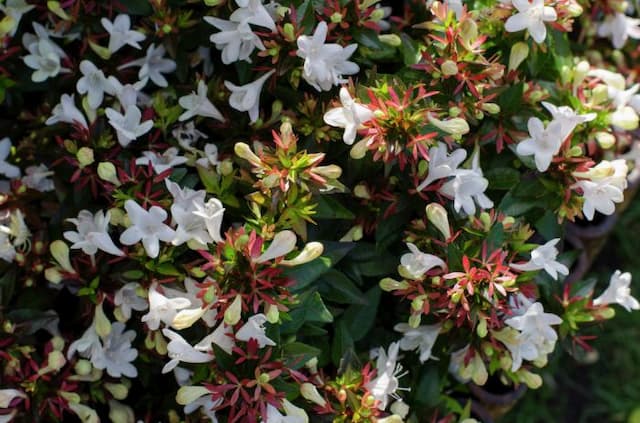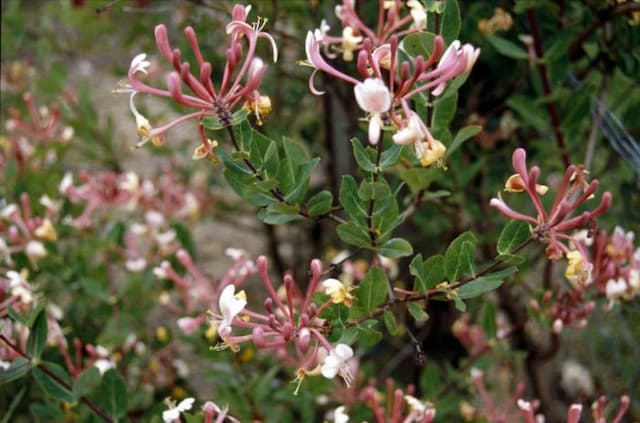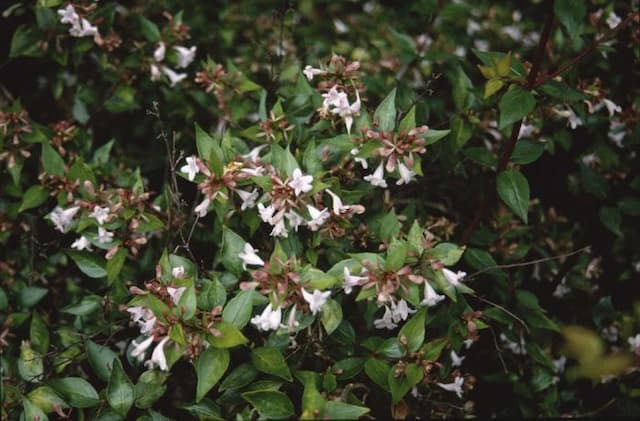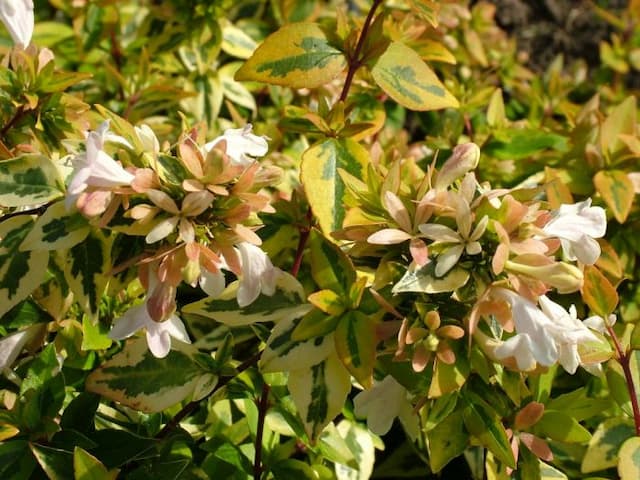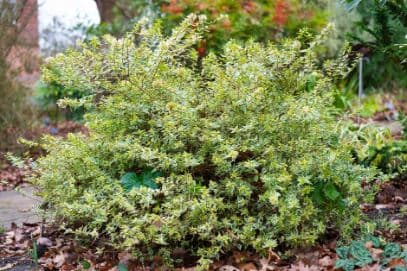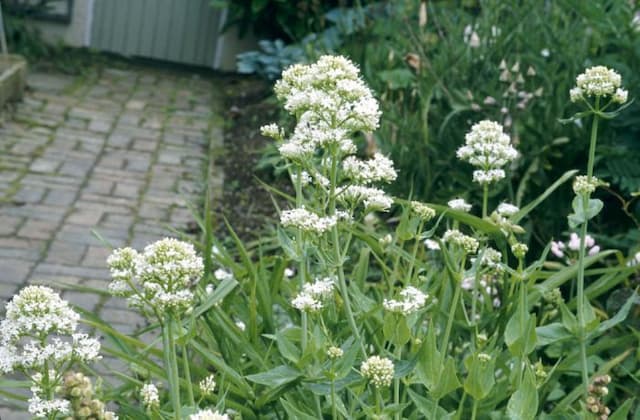Pincushion Flower Scabiosa 'Pink Mist'

ABOUT
Scabiosa 'Pink Mist', commonly known as pincushion flower, is an attractive perennial plant known for its soft pink flowers. The blossoms are composed of compact tufts of stamen-like petals that are tightly clustered together, giving the appearance of a pincushion, hence the name. The flowers bloom atop slender stems with a delicate appearance that belies their strength, and the petal arrangement provides a sense of texture and depth. The leaves of the pincushion flower are a lush green, forming a tidy rosette at the base of the plant. They are slightly lobed or divided and have a fine texture that complements the light, airy quality of the flower heads. The overall aesthetic of the plant is one of whimsy and softness, making it a favorite in cottage-style gardens and among those looking for a gentle touch of color in their landscaping. Its charming blooms are not only enjoyed in gardens but are also prized as cut flowers for their unique appearance and their ability to add a certain romantic quality to bouquets and floral arrangements.
About this plant
 Names
NamesFamily
Caprifoliaceae.
Synonyms
Pink Mist Scabious, Pincushion Flower, Pink Mist Pincushion Flower.
Common names
Scabiosa atropurpurea 'Pink Mist'
 Toxicity
ToxicityTo humans
Scabiosa 'Pink Mist', commonly known as Pincushion Flower, is not typically known for its toxicity to humans. There is little to no information suggesting that Pincushion Flower is poisonous or that it causes any harmful effects when touched or ingested. However, as with any plant, individual allergies or sensitivities may exist, and it is always best to exercise caution and refrain from eating or handling plants that are not explicitly listed as safe.
To pets
Pincushion Flower is not widely recognized as toxic to pets. There is no significant evidence to suggest that it poses any serious risk if ingested by animals such as cats or dogs. However, pet owners should still be cautious and prevent pets from eating plants, as individual animals might have unique reactions or allergies to plant material. If you suspect your pet has eaten a large amount of Pincushion Flower and is showing unusual symptoms, it is advisable to consult a veterinarian.
 Characteristics
CharacteristicsLife cycle
Perennials
Foliage type
Deciduous
Color of leaves
Green
Flower color
Pink
Height
1-2 feet (30-60 cm)
Spread
1-2 feet (30-60 cm)
Plant type
Herb
Hardiness zones
3-9
Native area
Europe
Benefits
 General Benefits
General Benefits- Attractive to pollinators: Scabiosa 'Pink Mist' attracts bees, butterflies, and other beneficial insects to the garden.
- Long blooming period: This plant produces flowers throughout the summer, providing an extended display of color.
- Drought-tolerant: Once established, it is quite resistant to short periods of drought, making it suitable for xeriscaping.
- Low maintenance: Requires minimal care, thriving in a variety of conditions without extensive upkeep.
- Cottage garden appeal: Adds a whimsical charm to cottage-style gardens with its pincushion-like flowers.
- Cut flower: Stems of Pink Mist are well-suited for use in fresh floral arrangements.
- Compact size: It is relatively small and tidy, which makes it ideal for borders, small gardens, and containers.
- Deer resistant: The plant is not palatable to deer, therefore it is less likely to be damaged by grazing animals.
 Medical Properties
Medical PropertiesThis plant is not used for medical purposes.
 Air-purifying Qualities
Air-purifying QualitiesThis plant is not specifically known for air purifying qualities.
 Other Uses
Other Uses- Scabiosa 'Pink Mist', commonly known as Pincushion Flower, can be used as a natural dye for fabrics, as its petals contain pigments that can produce soft pink hues.
- The flowers of the Pincushion Flower can be pressed and included in homemade paper to create decorative and individual stationery designs.
- When dried, the blossoms of the Pincushion Flower retain their shape and color, making them ideal for use in dried floral arrangements and craft projects.
- The long stems and attractive blooms of the Pincushion Flower make them suitable as a natural support for climbing plants when used in a mixed border.
- Due to its intricate structure, the Pincushion Flower can be used in photography, especially macro photography, to study and appreciate the patterns and details of nature.
- The Pincushion Flower, being a favorite among pollinators, can be part of educational gardens designed to teach children and adults about the importance of insects in pollination.
- The seeds of the Pincushion Flower can be used in seed art or mosaics, creating intricate patterns and pictures with natural materials.
- Used in pet-safe gardens, the non-toxic nature of the Pincushion Flower makes it a safe ornamental option for areas frequented by domestic animals.
- The Pincushion Flower's distinctive shape can inspire artists and designers in creating patterns for textiles, wallpaper, or other decorative motifs.
- In culinary presentations, although not commonly ingested, the non-toxic petals of the Pincushion Flower could be used as a delicate garnish for desserts and dishes.
Interesting Facts
 Feng Shui
Feng ShuiThe Pincushion Flower is not used in Feng Shui practice.
 Zodiac Sign Compitability
Zodiac Sign CompitabilityThe Pincushion Flower is not used in astrology practice.
 Plant Symbolism
Plant Symbolism- Love - Scabiosa often symbolizes love and admiration, and with its delicate pink shades, 'Pink Mist' especially evokes a gentle and soft expression of affection.
- Admiration - The beauty and form of the bloom are reflective of the feelings of respect and high regard one may have for another, making it a common flower used to express these sentiments.
- Longevity - This plant is known for having a long blooming season, which can symbolize a wish for a long-lasting relationship or life.
- Purity - The light pink color of 'Pink Mist' is often associated with innocence and purity, conveying a sense of pure intentions or thoughts.
 Water
WaterPincushion Flower, commonly known as Scabiosa 'Pink Mist', should be watered deeply whenever the top inch of soil feels dry to the touch, which typically averages out to once a week. It is important not to overwater as the plant prefers well-drained soil; excessive moisture can lead to root rot. During hot spells, you may need to water twice a week, providing about 1 to 1.5 gallons per plant each time, ensuring the entire root zone is moistened. During the winter or in cooler climates, reduce watering frequency as the plant requires less moisture due to slower growth rates.
 Light
LightFor optimal growth, Pincushion Flower thrives in full sun to part shade. It prefers to be positioned in a spot where it receives at least 6 to 8 hours of direct sunlight daily, with some relief from the intense afternoon sun if you're in a particularly hot climate. Dappled shade during peak sun can help prevent scorching of the leaves.
 Temperature
TemperaturePincushion Flower's ideal growing temperatures range between 60 to 75 degrees Fahrenheit. It can survive minimum temperatures down to 30 degrees Fahrenheit, making it a resilient plant for cooler climates. However, to maintain its vigor, it should not be exposed to temperatures above 85 degrees Fahrenheit for extended periods.
 Pruning
PruningPincushion Flower benefits from regular pruning to encourage bushier growth and more blooms. Deadheading, or removing spent flowers, should be done frequently during the flowering season to promote continuous blooming. Cut back the foliage by one-third in early spring to stimulate new, robust growth. The best time for pruning is after the last frost in spring or early summer.
 Cleaning
CleaningAs needed
 Soil
SoilThe Pincushion Flower prefers well-draining soil with a slightly alkaline pH around 7.0 to 7.5. A mix of garden soil, compost, and sharp sand or perlite can create an ideal growing environment for Scabiosa 'Pink Mist'.
 Repotting
RepottingPincushion Flowers typically don't require frequent repotting. Repot every 2-3 years or when the plant outgrows its current container to refresh the soil and provide room for growth.
 Humidity & Misting
Humidity & MistingPincushion Flowers do well in average atmospheric humidity levels and do not need any special humidity considerations.
 Suitable locations
Suitable locationsIndoor
Provide full sun, well-draining soil, and infrequent water.
Outdoor
Plant in full sun, well-drained soil, and space 12 inches apart.
Hardiness zone
3-9 USDA
 Life cycle
Life cycleThe life cycle of Scabiosa 'Pink Mist', commonly known as the Pincushion Flower, begins with seed germination, typically in early spring, in temperatures between 65-70°F. Once the seedlings emerge and develop true leaves, they are transplanted into well-draining soil in an area with full sun to partial shade. The plant enters its vegetative growth phase, establishing a deep root system and producing a rosette of foliage, with flowering typically starting in late spring to early summer. The Pincushion Flower continues to bloom throughout the summer and into the fall, producing pink, frilly flowers that attract pollinators. As temperatures cool, the plant's growth slows down and it enters a period of dormancy, especially in colder climates where it may die back to the ground. In the following spring, if the plant has established itself as a perennial, it will resume growth from its root system, repeating its cycle of vegetative growth and flowering.
 Propogation
PropogationPropogation time
Spring-Early Summer
Propogation: Scabiosa 'Pink Mist', commonly known as Pincushion Flower, can be effectively propagated from seeds. The optimal time for sowing seeds is in early spring, after the risk of frost has passed, or alternatively, they can be started indoors 6 to 8 weeks before the last expected frost. To propagate by seed, one should lightly press the seeds into a tray filled with a well-draining seeding mix and barely cover them with soil, as they need light to germinate. The tray should be kept moist and in a warm position with plenty of sunlight until germination occurs, which usually takes between two to three weeks. Once the seedlings have grown sufficiently and the danger of frost has passed, they can be transplanted into the garden. This method is favored for its simplicity and effectiveness in producing new plants that are true to the parent in terms of growth and flower characteristics.
